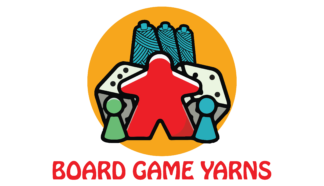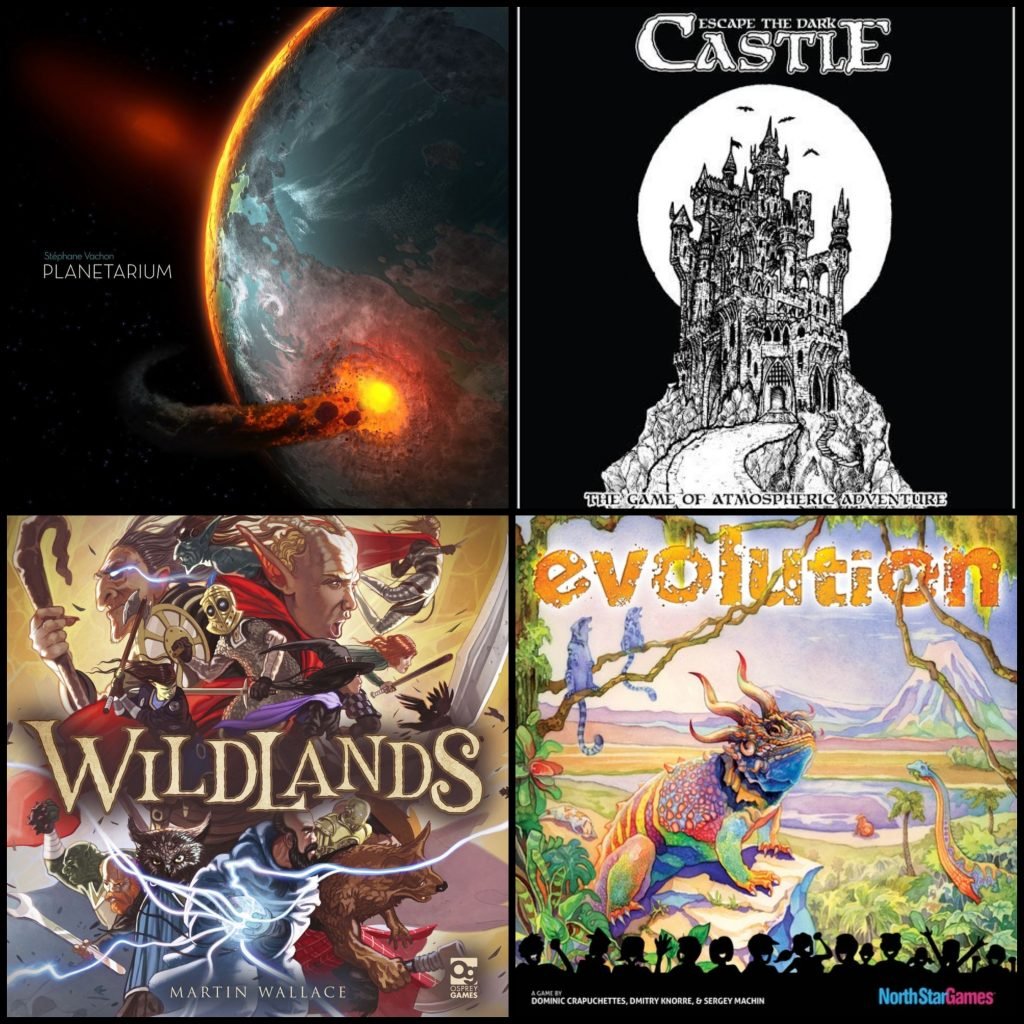
TLDR:
It was another gaming session at Ben’s last Sunday. There were four of us and we played:
Skull, Planetarium, Escape the Dark Castle, Wildlands and Evolution
–
Ben’s written some thoughts of this session over on Sneaky Meeples – check it out!
Daniel has started his own Instagram which includes posts of this session – check it out!
Where does the time go?
Wow! Where has this week gone? It’s absolutely flown by for me. Here I am on Friday only just sitting down to write up last Sunday’s gaming session!
This sesh saw Daniel, who has just started his own board gaming Instagram, getting involved. He drove over to my house and I then shuttled us both up to Ben’s – we tend to alternate the venue from Ben’s and my house so as to share out the travel and food expenses of a gaming sesh. Daniel already has eyes on a potential gaming room in his new house. Apparently his fiance wanted a just-so kitchen and he wanted space for games and they found both in their new home. Sounds like a fine accord to me! So venue no. 3 might be open for business later in the year! 😉
As per the title of this article, it was a reunion of sorts because Daniel, Ben and I used to work together. Ben and I have since moved on from our once mutual employer, but Daniel is still there. For one reason or another this was the first time we’d all got together in a long stretch and it was great catching up! Ben’s other half, Rachel was also there to join in on a rather colourful spread of games that took us across the cosmos, as well as forging an alternative natural history.
Let’s crack some skulls!

We actually began the session with a game of Skull, which was an old favourite at the old office due to its high player count (you can easily combine two sets), sparse rules and quick gameplay, It was also one of the first games Daniel, Ben and I all played together, so a good choice by Ben to have set up and ready to go as soon as we arrived. This version draws its artwork from Dia de los Muertos (Day of the Dead) as seen below:
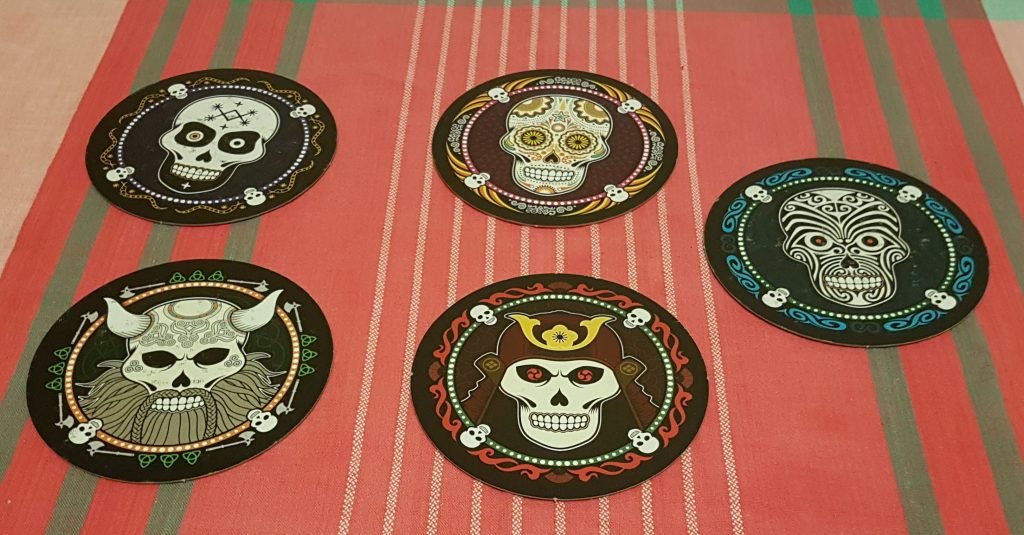
Depending on which tale you subscribe to, Skull is derived either from a pub game played by bikers with beer mats – in this form, it’s more commonly referred to as ‘Skull & Roses’. Or it’s steeped in the history of a sea-faring journey around the world that the creator’s grandfather completed in 1921, during which they learned of ‘The Game of Skulls’. This version is said to be played with actual flowers and skulls and has a dash of spiritualism: if you reveal a skull, it’s considered to ‘disturb the ancestors’ or something.
I love how in the purple version shown above (which Ben and I both own) goes to the trouble of weaving the ’round the world, spiritual tour’ yarn and then at the bottom of the same page of the tiny rules leaflet it has this footnote: “For the experts: the rules are identical to Skull & Roses.” So, yeah. Basically it’s the same game and regardless of what you call it or what it looks like, it’s just plain fun! 🙂
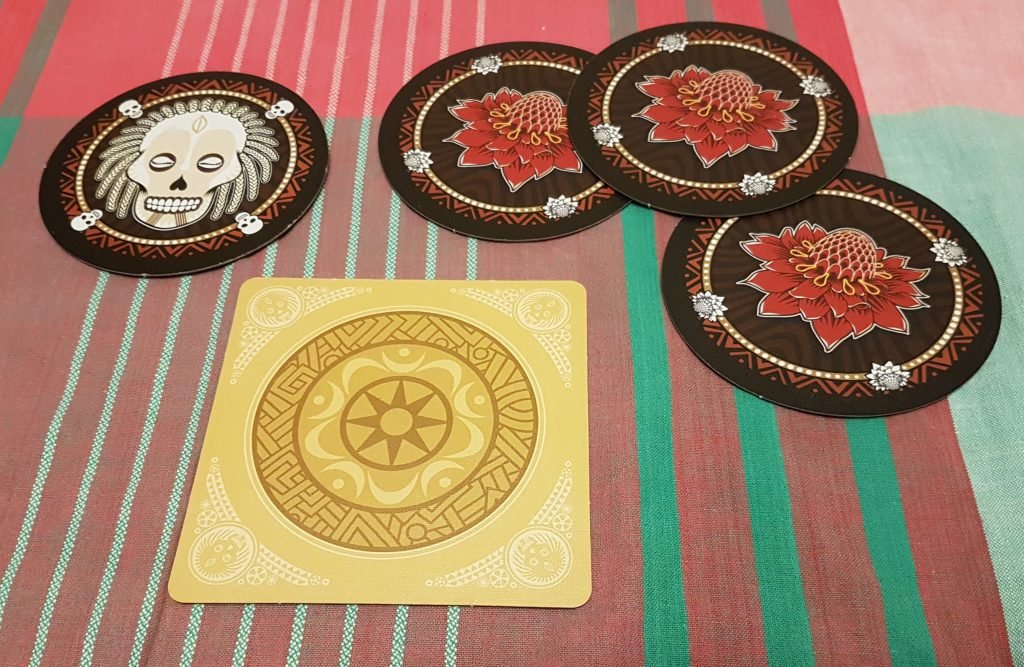
The idea is kinda like liar’s dice with beer mats. Each player antes up by placing (in secret) one of their discs (flower or skull) onto the mat. Then the round begins with the starting player either adding one of their remaining three discs or bidding on how many flowers they think they can reveal without revealing a skull. If they bid ‘four’, the next player can either bid ‘five’ or more, or they can pass to the next player. And so on, until everyone else passes. Then, the player who bid the highest number has to reveal all of their own discs first (this is important as it can backfire if you’ve played your own skull!). They then reveal the discs of other players until they have revealed the number of flowers they bid.
If they reveal four flowers and no skulls, they win one victory point and flip their mat to indicate this. If they reveal a skull, they lose a disc at random, diminishing their influence over the rest of that game. So the idea is bluffing your opponents into thinking what you’ve played is something different and trying to get them to overextend their bids so they reveal your or another opponent’s skull – or maybe even their own! Mohahahaha!
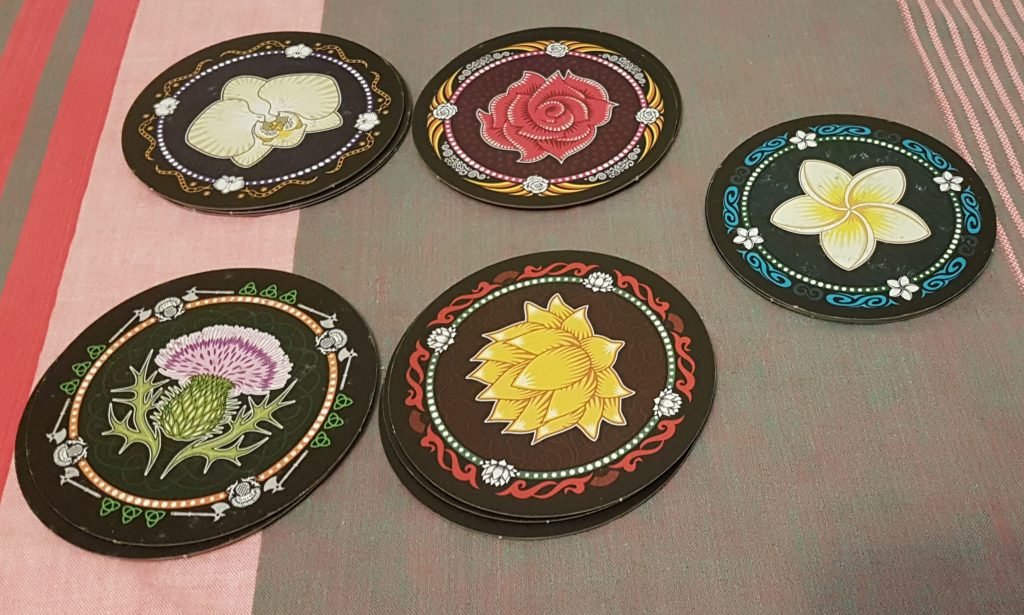
Gameplay can be fast and full of banter and bravado. After all, the idea is to unsteady your opponents! I’d recommend everyone has this in their collection as an ice-breaker/warm-up game. I’d also advise playing it for the first time with at least one person who has played it before; opposed to learning it with a group of newbies and reading the rulebook. The latter could end up a rather opaque experience if it doesn’t ‘click’.
I’m still in shock that I actually won a game of this because my bluffing skills are rubbish! My luck soon ran out in the second game though, which Daniel won. It was good fun revisiting this little gem after such a long time.
Planetarium (Sanitarium). It’s all about metal
Up next was Planetarium and I’m sorry, but I can’t get Metallica’s ‘Welcome Home (Sanitarium)‘ out of my head every single time I think of this game’s title! Each time I form the word in my brain, it’s growled at me in Hetfield’s voice. (Look, it scans EXACTLY the same, ok?!) Still, this game is nothing like the psychological Hell described in that song. For a start, it’s actually fun. And it doesn’t include any lobotomies or electroshock therapy! Did you know the song is based on the film, One Flew Over the Cuckoos Nest? Pretty dark subject matter, no? Metallica may still manage to crank out a decent riff here and there, but their recent lyrics are a far cry from those early albums. Anyway, moving on…
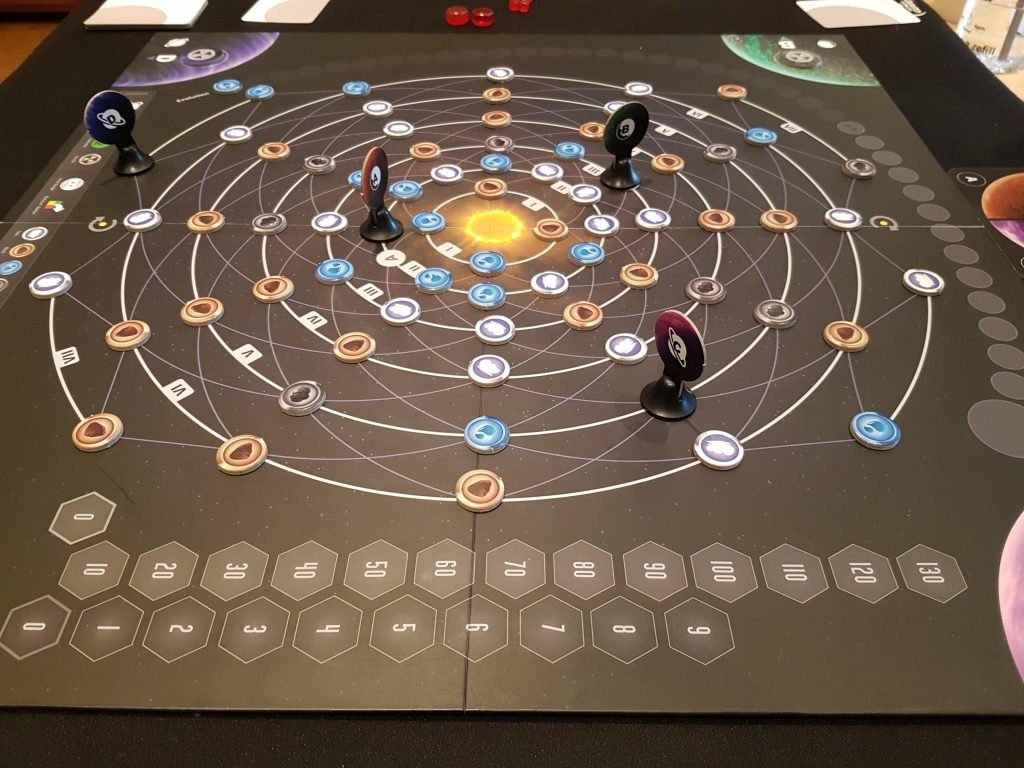
This game is all about terraforming (no, not Mars!). There are four planets spinning around a solar system along with resources in the form of rock, water, gas and metal. It’s the players’ job to steer either the planets, the resources or both into one another to develop or destroy an atmosphere/environment on each planet. The cards you get dealt can encourage you to foster a rich, Earth-like atmosphere or sway you to destroy everything and keep it uninhabitable, making it as nuclear as the far reaches of space itself.
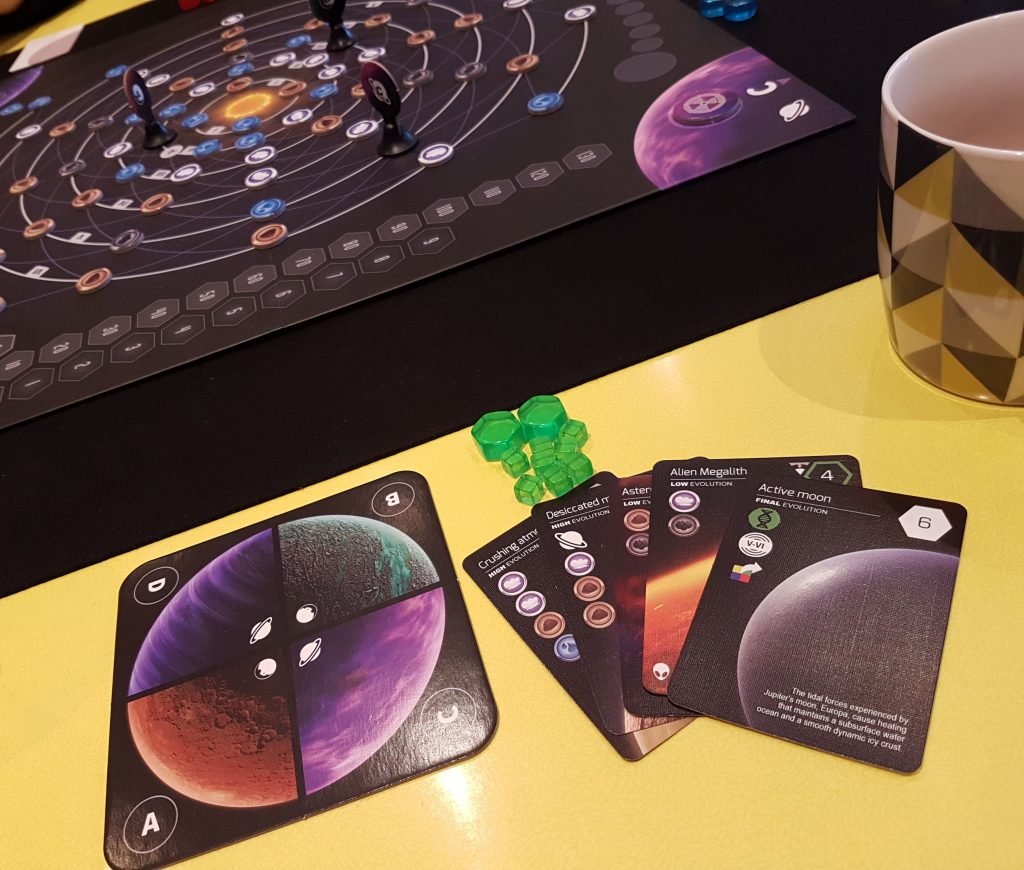
Player tip:
I enjoyed this game, but my strategy was blown apart by the simple fact I hadn’t counted the number of each resource before deciding to gather metal. Players should take note that there might be a hefty 22 gas and rock tokens, but there are less water and metal. In fact, it’s a pretty drastic drop, with only 16 water and a measly 8 metal! If only I’d spotted this earlier in the game, I might have stood a chance. I hope I can try this again at some point.
Finally Escaping the Dark Castle!
If you’ve read some of my previous posts, you’ve probably seen that my gaming group and I are big fans of Escape the Dark Castle by Themeborne. For those of you that don’t know: EtDC is a cooperative dice-rolling game in the style of an 80’s choose your own adventure book and it’s ace! We’ve played this at almost every meetup recently and I’m pretty sure we’re all better people for it. 😉 We’ve taken to playing with curses and character flaws thrown into the mix.
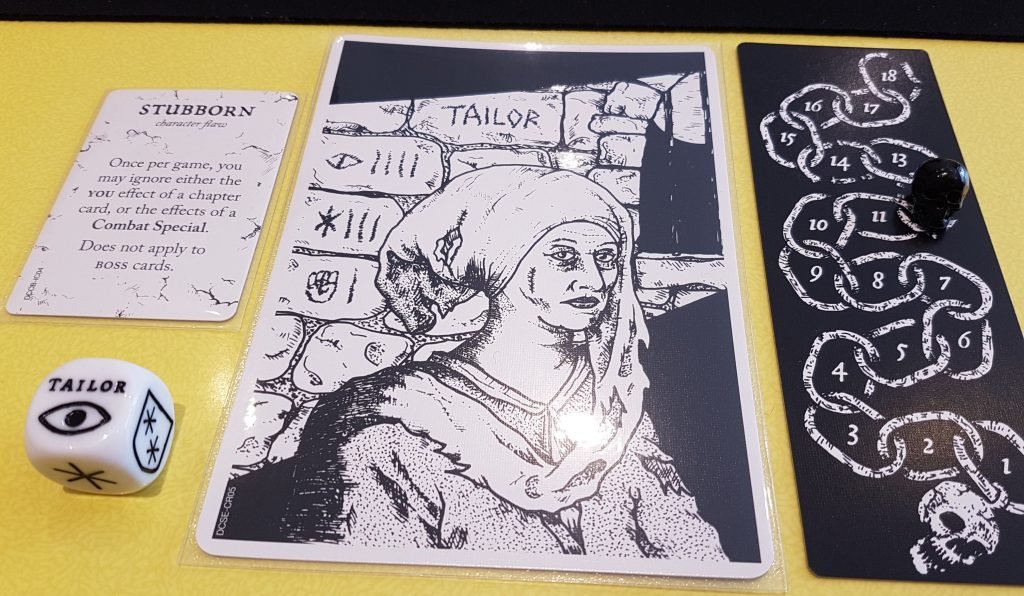
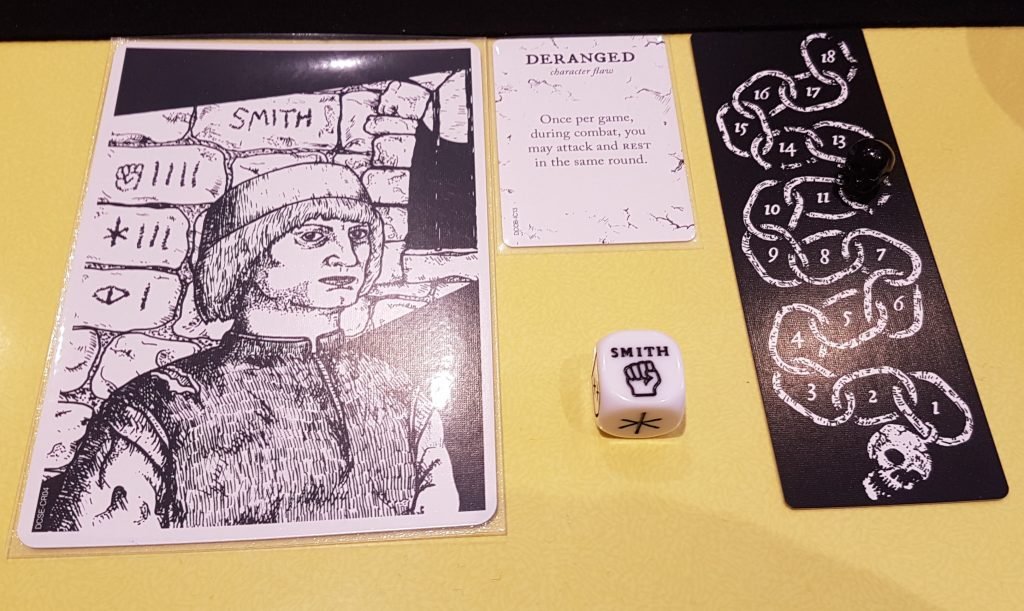
The game is somewhat designed to crush players into a fine red mist, rather than permitting them to escape too often. We’ve had our fair share of ogres crushing us with rocks, banshees literally screaming our brains to mush and various other gruesome ends, all vividly described in the Death Book. The Death Book is an additional, optional item which (as it sounds) contains descriptions of the horrible deaths the game’s prisoners (players) endure.
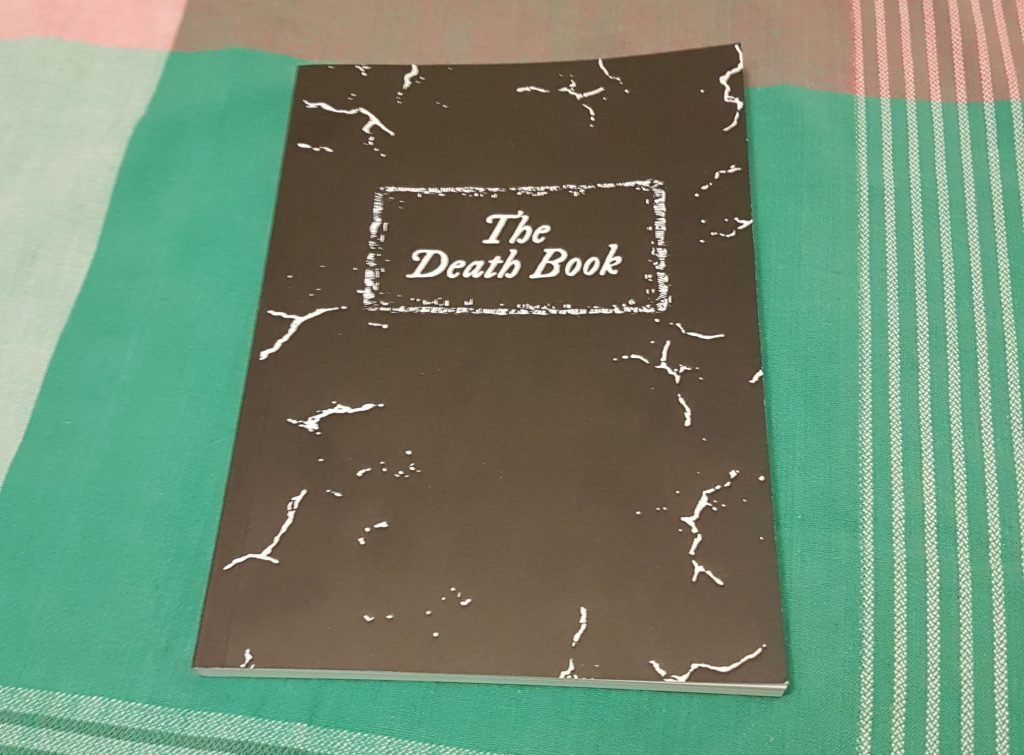
Themeborne have just sent this and the other new items from the 2nd Kickstarter to retail, so now’s a good time to stock up on new goodies if you missed out on the KS.
So the main difference in this play session was that – we actually won – both games! I was suspicious we may have misplayed something along the way, but I don’t think we did. In one of our games, Daniel delivered the killing blow to this screeching hellbeast, The Undead Queen:
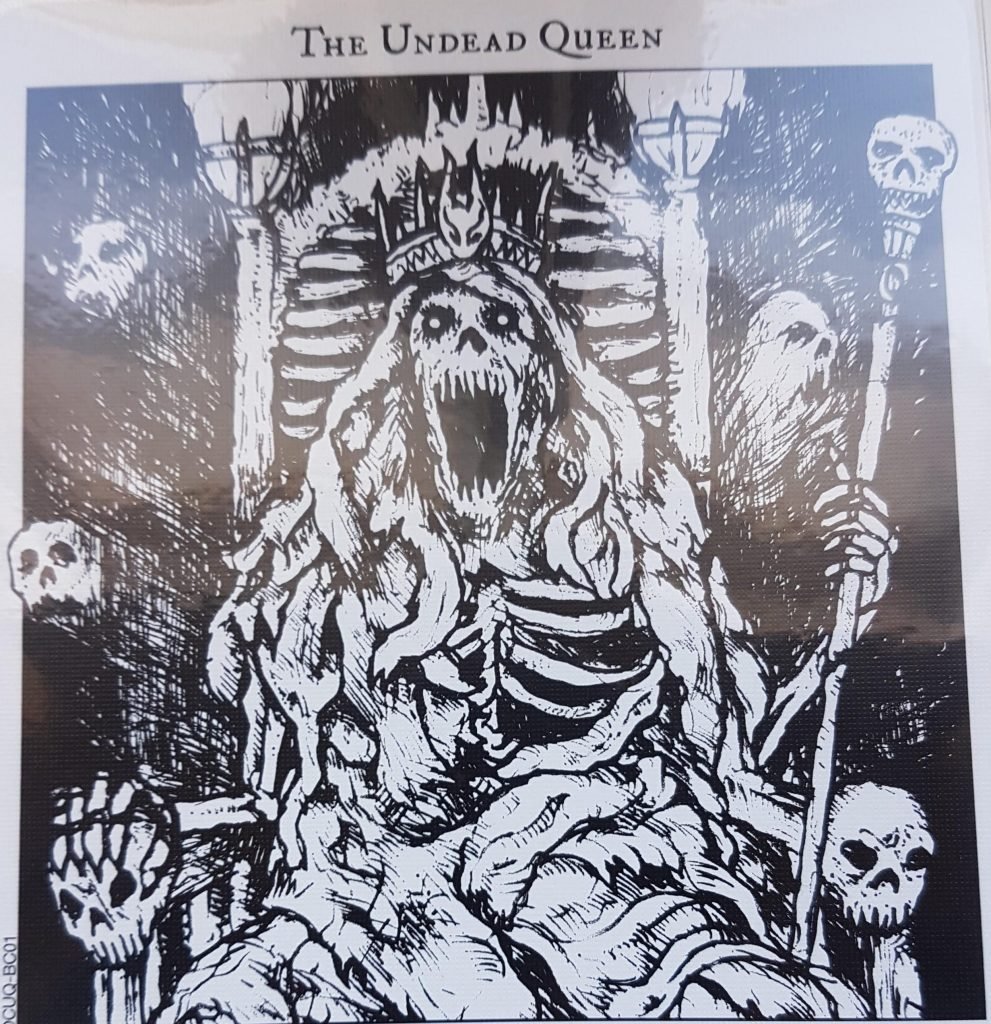
Wildlands
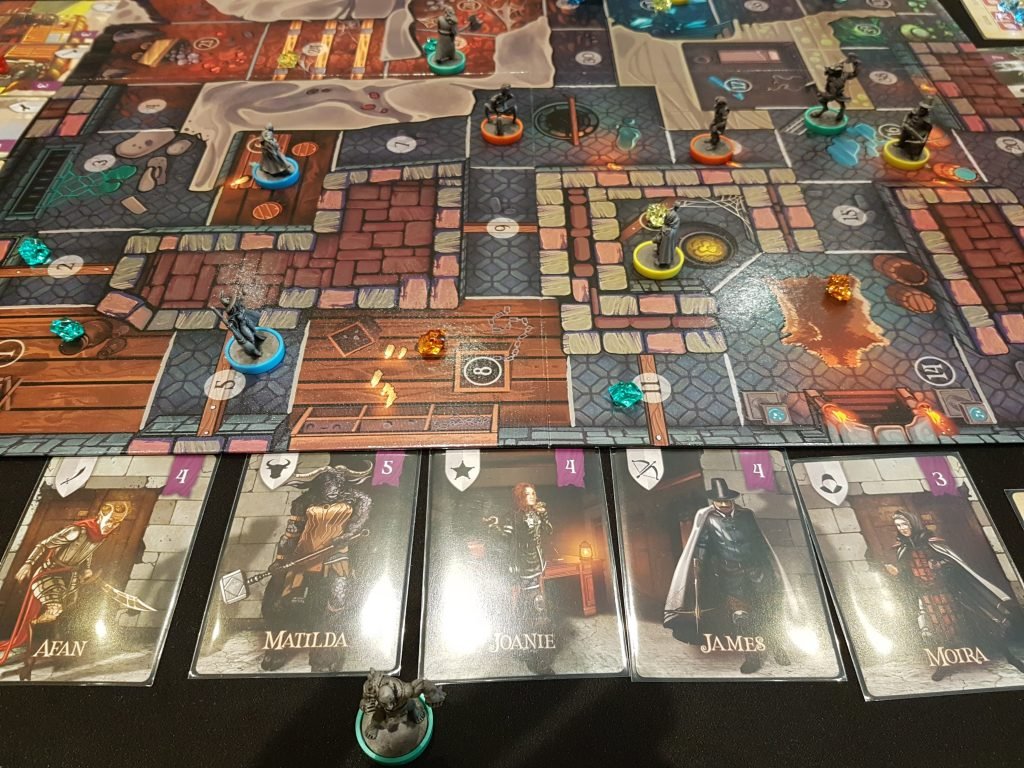
Next, we played two games of Wildlands, both of which Ben won, pretty quickly. I played as the Lawbringers for the first time (pictured above), but failed to bring the law to anyone! I did at some point get a kill (ahem, I mean knock-out – apparently this game is non-lethal!), which is shown by my opponent’s miniature stowed below my cards. I look forward to playing on the other side of the board at some point, as the additional strategy of ‘higher ground’ affecting line of sight and movement could be interesting.
We like to think we are all highly evolved…
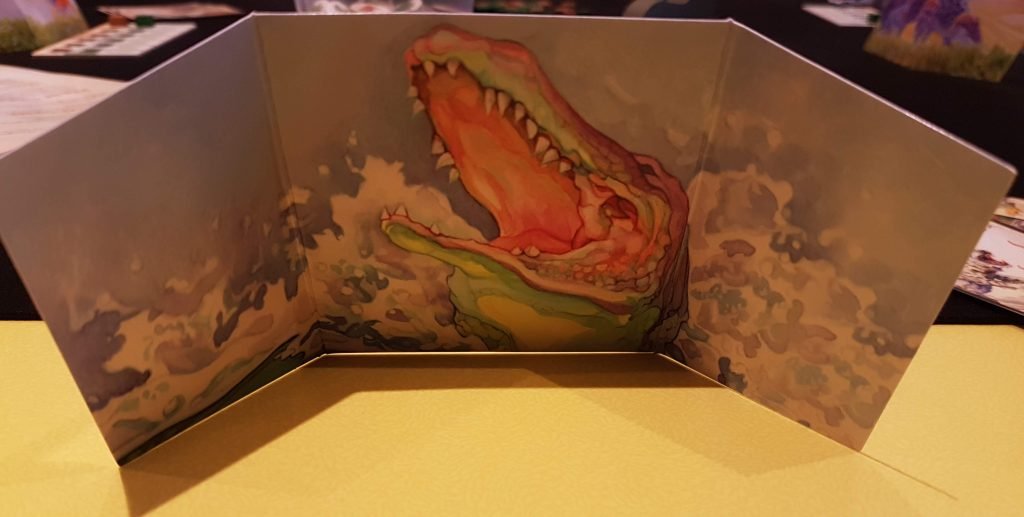
We finished off the sesh with a game that was new to Daniel and I: Evolution. Ben and Rachel had played it a couple of times, but it was still relatively new to them too. I’ve kinda written this first game off as a learning experience for me as I didn’t really catch on until it was too late. My early strategy fell apart because I didn’t yet know how the game worked and I didn’t see a lot of the cards others were playing until much later on in the game. Not to take away from Daniel though, who wiped the floor with all of us! He went full-on carnivore with his species early on and it worked like a dream! Seeing his species develop and come together successfully schooled me in the ways of Evolution pretty effectively!
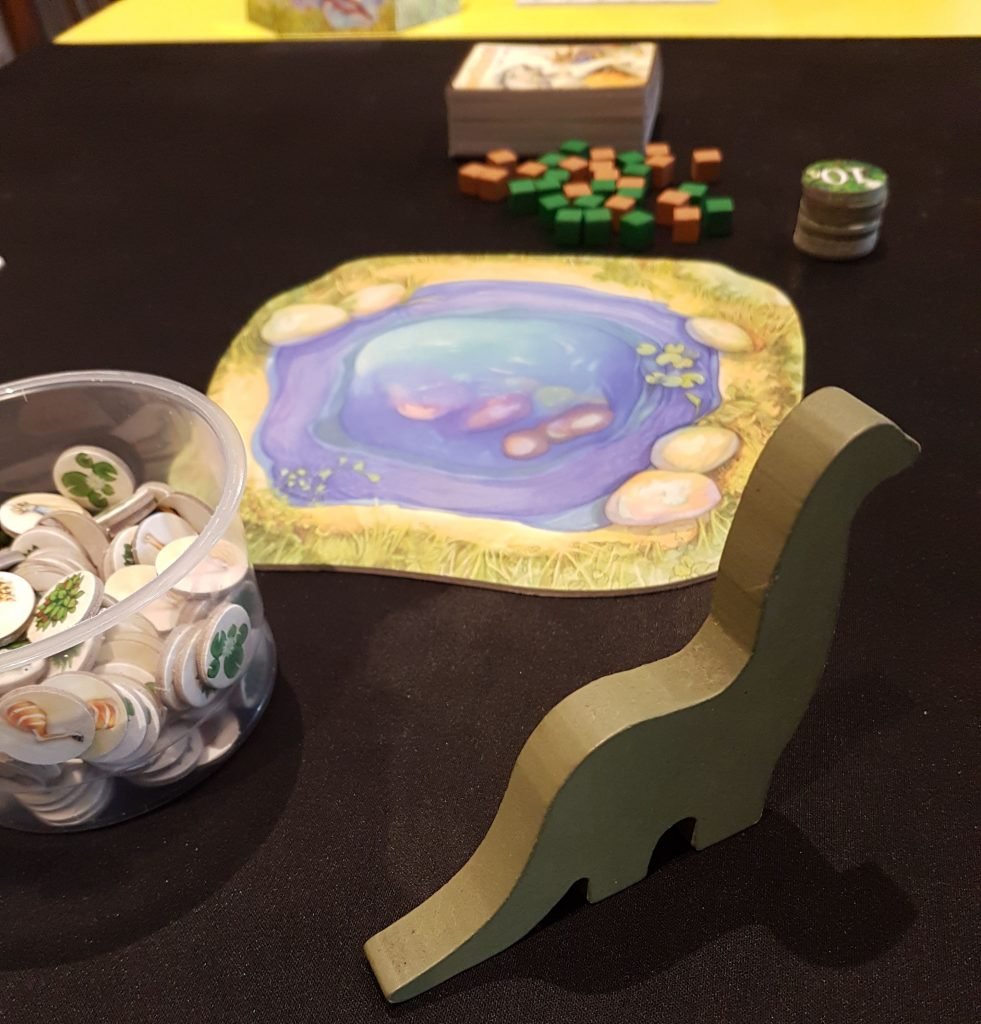
Now, I’m not all that competitive, so winning or losing doesn’t bother me all that much. I’m very much in it for the ride. That’s not to say I don’t try to win. I will always try my best, but I’m not going to flip any tables if I lose. I’m happy as long as I’ve enjoyed the game. So, did I enjoy Evolution?
I was keen to try this game, but I felt its accessibility was hindered. I also felt this could be resolved with some design changes of the components. This game is fast approaching ten years since its original Russian release, so perhaps I should forgive some of these design flaws, as I perceive them? Maybe, but I perceive them nonetheless! 🙂
The spread of components at table means real estate is at a premium – especially if you get a few species into play (not that I had this particular problem. I struggled to keep one species alive!) What bugged me most was that at no point in the game could I just glance across the table to check what players had put into their species builds. The trait cards have some lovely artwork, but the bit that matters (a strip across the bottom of each card describing its cost to play and its effect), is small and contains very small text. This just can’t be read at a distance.
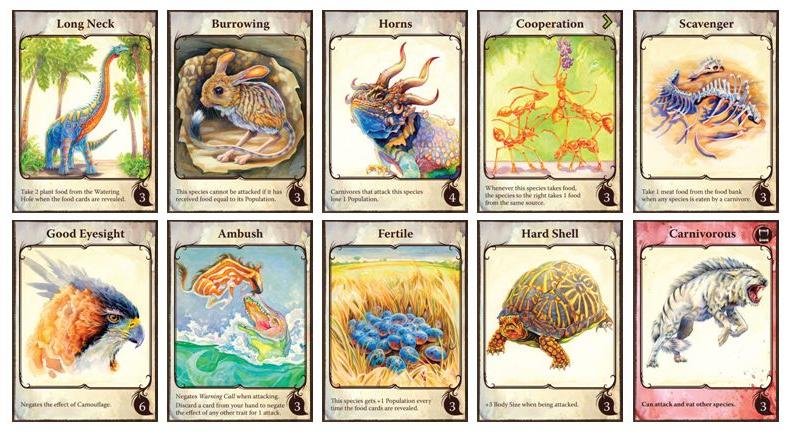
The game has two key stats for your species: body size and population. You generally want to increase both of these to make your species more difficult to hunt by your opponents, but you also need to keep your species well fed. If you can’t feed your whole population, that population will decrease as a result. On your species boards, where you keep track of body size and population, these stats are clear as day – monitored with large wooden cubes. (I missed getting a photo of these, but you can check them out on Daniel’s Instagram.)
However, these stats can be modified by cards you play – you know, the ones with illegibly small text describing their effects. I’m sure once you’ve played the game a few times, you get used to which cards might be in play on a particular species, but for a beginner, this was a nightmare! Because space was at a premium, we all stacked our cards so that just the bottom strip of text was visible. This didn’t help as the unique species art was totally obscured, so no chance of identifying the cards using this. The coloured borders of the cards which would at least narrow down what type of upgrades you’ve applied was also mostly obscured. Leaving just the card names visible also doesn’t help that much until you know what they mean. Not only does this affect accessibility/learning, but it also impacts game flow.
The cards would be much better off with some additional iconography to at least show if they bolster body size and/or population. There didn’t even seem to be an icon for either of these attributes that was used across game components – a very puzzling design decision to me. Not all of the upgrades affect these two stats, so other icons would also be useful to represent their distinct effects.
There’s a level of accessibility required in every game’s design. I guess games which try to represent the larger scientific theories like evolution, terraforming/the big bang etc, already have it pretty tough. It’s not like they can lean on common tropes like ‘humanoid characters in combat’ games can. But some games ‘just work’ accessibility-wise and I don’t think Evolution falls into that category for me. At least not until I know what my opponent’s ‘long neck’, ‘burrowing’ ‘scavenger’ is capable of off the top of my head!
In closing
So a mixed bag of games this time around IMHO. I still enjoyed the day even though I struggled to grasp some of the games. To be honest, I’m just happy to get together with friends and play some games – whatever they are. Although if you suggest Monopoly, I might have words! 🙂
I’d be happy enough to try Planetarium and Evolution again. Even though I had issues with Evolution’s component design impeding my learning, I reckon once I’m more familiar with the cards (there are only about 17 different ones in the core set), I’d be able to read the table more easily.
I’m always grateful for the opportunity to play something new.
‘Til next time – game on!
Error: No feed found.
Please go to the Instagram Feed settings page to create a feed.
